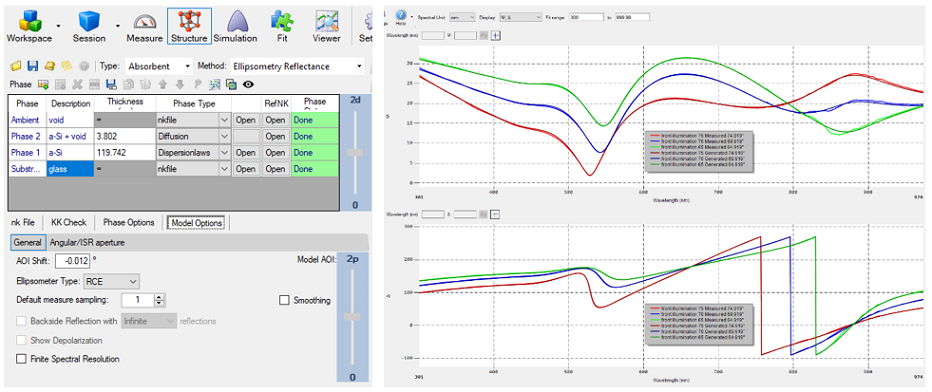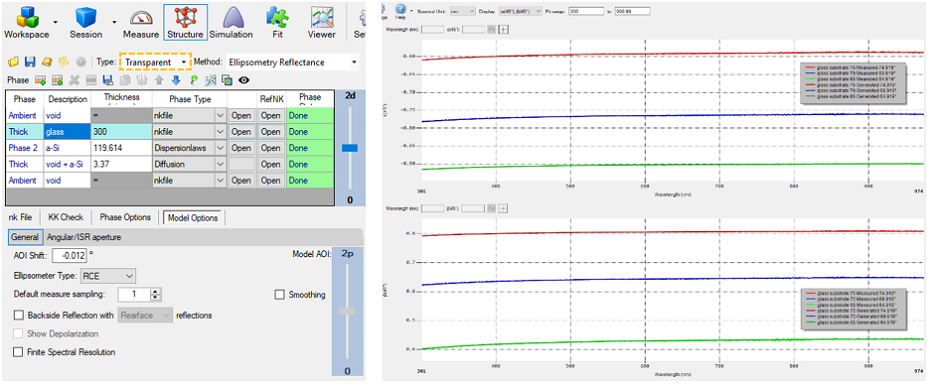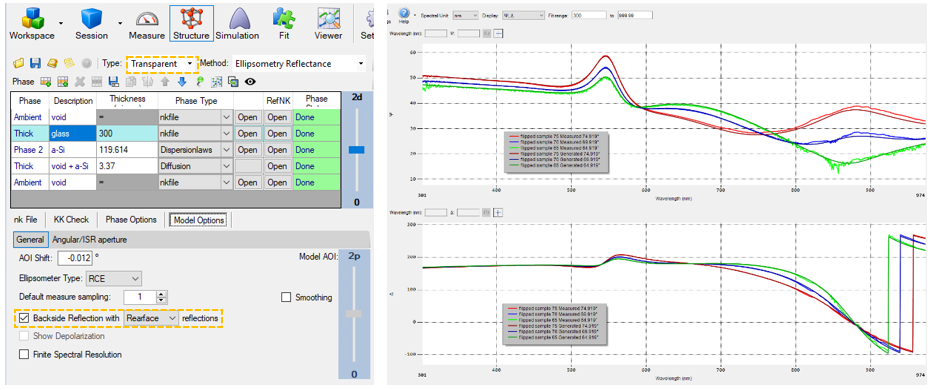In certain instances, direct access to a structure being studied may not be possible due to mechanical constraints, such as device packaging or limitations related to the samples themselves.
To address this issue, Semilab's spectroscopic ellipsometry (SE) is capable to examine layer structures through the rear face of a transparent substrate. This allows for the collection of information about the layers without causing damage and offers a practical method for circumventing the challenge of restricted access.
This instance illustrates the analysis of specific samples featuring a layered structure on the back of the substrate. The measurement focuses on a layer structure located on the rear surface, specifically an amorphous Si layer (a-Si) on a glass substrate.

Figure 1. Schematic representation of the front and rear-face measurements. Image Credit: Semilab Semiconductor Physics Laboratory
Metrology
The Semilab microspot system facilitates the selection of either front or rear-side focusing. This is achieved by splitting the beams from the two surfaces through magnification.

Figure 2. Separated intensity maxima on the focusing curve. Image Credit: Semilab Semiconductor Physics Laboratory
Use Case
Layers on the Top Surface
Three different rounds of measurements were conducted at varying angles of incidence: 65°, 70°, and 75°. The initial set of measurements involved the a-Si as the uppermost layer.

Figure 3. Model for the layer on top (front side illuminated) case. The glass *. nk file for substrate, an a-Si layer, a diffusion layer on the top for describing the top roughness of the a-Si film and type "Absorbent" are selected. Image Credit: Semilab Semiconductor Physics Laboratory
Layers on the Rear Surface
The subsequent two measurements were performed on a flipped sample. Consequently, the model structure was adjusted accordingly, with the glass substrate now positioned as the uppermost surface. In the second set, measurements were taken by directing the beam toward the upper glass surface.

Figure 4. Rearranging the layers alone produces spectra corresponding to the top surface, which aligns closely with the glass measurements. To accurately handle the rear side layer, the structure type should be set to Transparent. Image Credit: Semilab Semiconductor Physics Laboratory
The beam was aimed at the rear surface for the third measurement set. This was possible because the sample had been flipped, and the a-Si layer now occupied the rear side. To conduct measurements on the rear side, the settings of the SE Analysis (SEA) software needed to be modified to accommodate structured layers situated on the back.

Figure 5. Backside reflection with rear face reflections provides good generated spectra for the flipped sample measurements. In order to take the layers under the glass substrate into account, the “Backside Reflection” check-box has to be selected along with the “Rearface” option from the roll down menu. Image Credit: Semilab Semiconductor Physics Laboratory
Rather than rearranging the structure, the 'Reversed sample' option within the Measure section of SEA can be enabled. This approach allows SEA to handle the structure upside-down.

Image Credit: Semilab Semiconductor Physics Laboratory
Materials and Structures
The Semilab SE system unveils layer structures by analyzing the rear faces of transparent substrates. This process provides crucial insights into coatings, layers buried within, enclosed devices, and thin films that would otherwise be inaccessible using alternative methods.

This information has been sourced, reviewed and adapted from materials provided by Semilab Semiconductor Physics Laboratory.
For more information on this source, please visit Semilab Semiconductor Physics Laboratory.